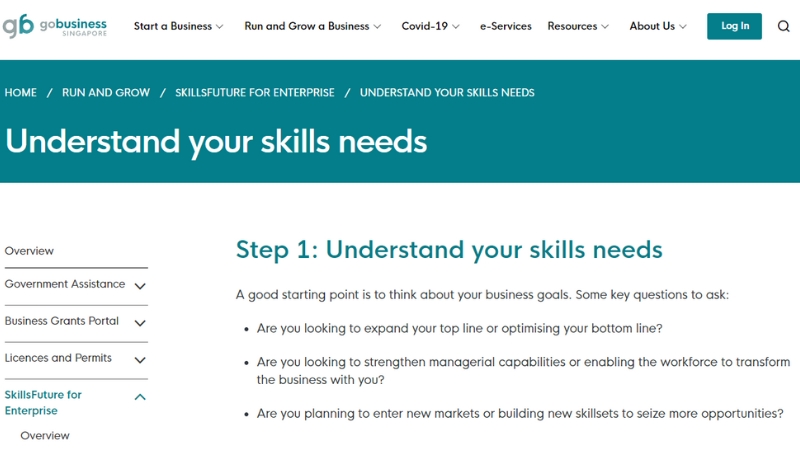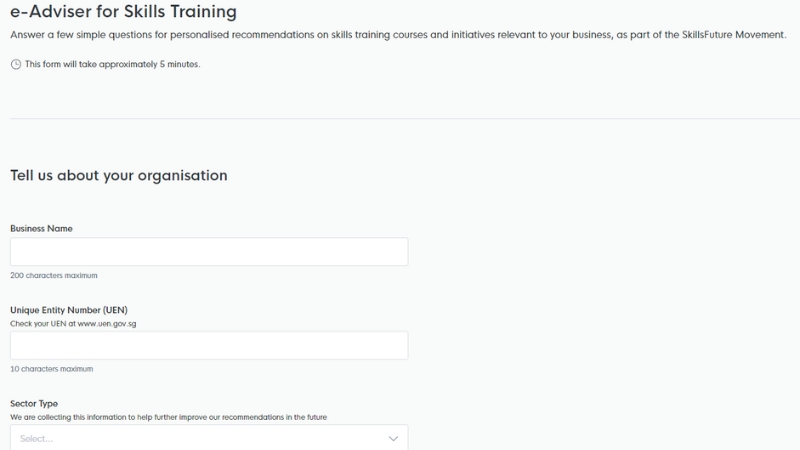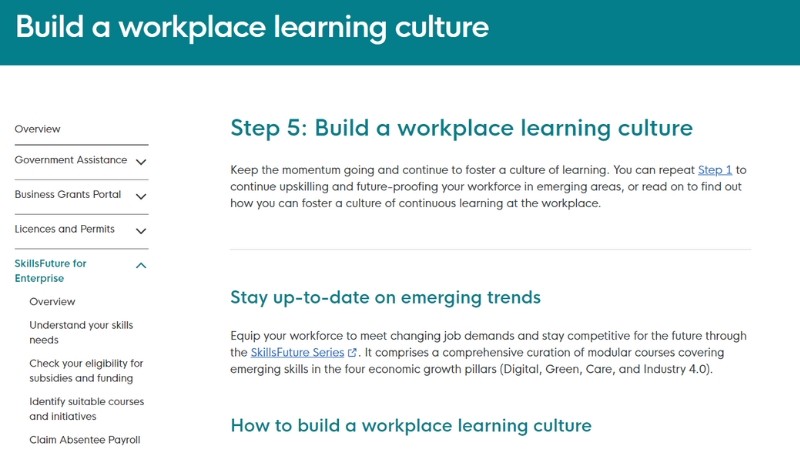Common employee training challenges and how to overcome them

The benefits of employee training are well understood – with improved productivity, motivation, and business performance being some of them. In fact, learning and development professionals in the Asia Pacific cited upskilling and reskilling as their top priority in a 2022 workplace report by LinkedIn. PWC’s Global CEO Survey (PDF, 26.1 MB too cited employee development as a must-have in their organisation.
Even so, companies continue to face challenges in implementing such programmes. Common challenges include a lack of time, resources, or knowledge about upskilling programmes.
For instance, an article by Human Resource Executive cited that workers currently devote only an average of 24 minutes to upskilling themselves every week. However, to adapt to a changing workplace that is slowly being encroached upon by automation, workers need to spend at least nine hours a week on new, future-proof skills.
Addressing these challenges are paramount for companies to continue thriving, and employers can start by taking the lead to send their staff for employee development programmes. But how can they overcome some of the aforementioned challenges?
GoBusiness is here to help! The SkillsFuture for Business Guide provides step-by-step instructions to guide business owners through the process of skills development.
Meanwhile, the newly launched e-Adviser for Skills Training can provide business owners with personalised recommendations to help them along this journey!
Read on to discover how these tools can help you overcome some of the most common challenges faced by employers in the employee upskilling journey:
1. I’m not sure which course I should send my staff for

To avoid getting overwhelmed by the many different courses offered by different mediums, the SkillsFuture for Business Guide recommends starting by first understanding your business’ needs. Here are some questions you can ask to shortlist suitable courses:
a. What are my skills needs?
This involves assessing the skillset of your current staff as well as other resources (like software) and determining what is most needed in your business. For this, you’ll also need to first determine what you’re trying to achieve, whether it’s improving staff efficiency, improving your bottom line, or offering a new product or service.
For instance, if you have a digital marketer or staff who’s adept at digital advertisements as well as a Canva subscription for graphic design, you may want to look into a copywriting course for your digital marketer to improve marketing efforts.
The Guide offers several tools such as the Skills Framework and SME Skills Transformation Playbook that can help you identify and meet your business needs.
b. What are the training needs of my employees?
As an employer, it’s important to invest in the growth of your staff. Beyond your own business needs, it could be helpful to have a chat with your staff to better understand their career goals, and how you can support them through it.
c. What medium or format would be most suitable?
Whether it’s a short virtual course, an in-person training programme or even a hybrid format, the possibilities are endless in terms of course offerings. It’s important to consider the topic at hand to decide on the most suitable format.
A coffee roasting course, for instance, might require an in-person demonstration for maximum effectiveness. Meanwhile, a cybersecurity programme could possibly be conducted online.
Other factors for consideration include the amount of time allotted for training, budget, as well as employee preference and learning style.
Once you’ve an idea of the subject and type of course you would like to send your employees for, you can then proceed to check out what courses are available out there. Use the Guide to access a directory of SkillsFuture Singapore-funded courses or fill in your needs in the e-Adviser for recommendations on suitable courses.
2. I’m not sure which subsidy or grant is applicable to me
From the SkillsFuture Enterprise Credit to the Absentee Payroll Funding scheme, there are many government support options available to help you defray upskilling costs.
The SkillsFuture for Business Guide compiled the main grants and schemes available, with eligibility criteria clearly laid out for ease of reference. Additionally, the Guide provides instructions on how you can defray the manpower costs incurred when your employees are attending training programmes.

The GoBusiness e-Adviser for Skills Training can also come in handy to help you narrow down the government financial assistance schemes available.
Simply key in your company details and business needs, and a list of applicable grants, subsidies, and government-funded courses will be provided to you – alongside application links and a recommended list of courses registered under SkillsFuture.
3. My employees aren’t keen on attending training courses

Motivating employees was one of the main challenges CEOs faced when starting an employee development programme, according to a 2020 survey by PwC. To overcome this, employers need to ensure that the benefits are clearly communicated to employees. For example, this could include potential career advancement or pay raise opportunities once the training is completed.
It is also important for employers to reassure staff that time will be set aside for them to properly engage in the training programme, without having them resort to working overtime.
Check out the Guide for tips on how to build a workplace learning culture. Beyond recommending modular courses for upskilling in the workplace, the Guide also includes resources that you can approach if you would like additional advice on cultivating a mindset of lifelong learning in the workplace.
Let the SkillsFuture for Business step-by-step guide on GoBusiness help you kickstart your employee training journey!
Also make use of the GoBusiness e-Adviser for Skills Training to access a personalised list of recommendations for available training courses, subsidies and grants, as well as other upskilling resources!
This article is accurate as at 21 Feb 2023

